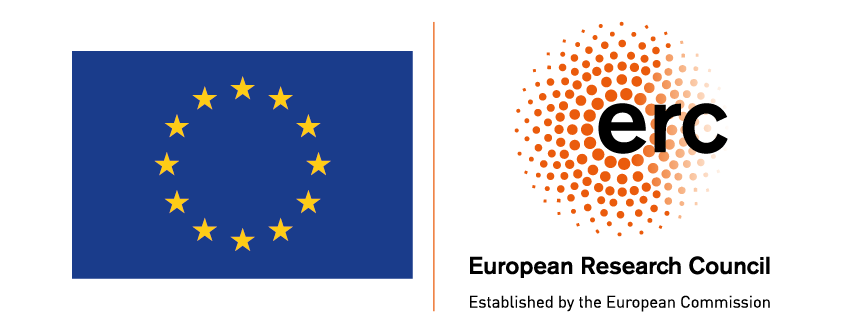ERC Cell Hormone: Bringing into focus the cellular dynamics of the plant growth hormone gibberellin.
Project Summary
During an organism’s development it must integrate internal and external information. An example in plants, whose development stretches across their lifetime, is the coordination between environmental stimuli and endogenous cues on regulating the key hormone gibberellin (GA). The present challenge is to understand how these diverse signals influence GA levels and how GA signalling leads to diverse GA responses. This challenge is deepened by a fundamental problem in hormone research: the specific responses directed by a given hormone often depend on the cell-type, timing, and amount of hormone accumulation, but hormone concentrations are most often assessed at the organism or tissue level. Our approach, based on a novel optogenetic biosensor, GA Perception Sensor 1 (GPS1), brings the goal of high-resolution quantification of GA in vivo within reach. In plants expressing GPS1, we observe gradients of GA in elongating root and shoot tissues. We now aim to understand how a series of independently tunable enzymatic and transport activities combine to articulate the GA gradients that we observe. We further aim to discover the mechanisms by which endogenous and environmental signals regulate these GA enzymes and transporters. Finally, we aim to understand how one of these signals, light, regulates GA patterns to influence dynamic cell growth and organ behavior. Our overarching goal is a systems level understanding of the signal integration upstream and growth programming downstream of GA. The groundbreaking aspect of this proposal is our focus at the cellular level, and we are uniquely positioned to carry out our multidisciplinary aims involving biosensor engineering, innovative imaging, and multiscale modelling. We anticipate that the discoveries stemming from this project will provide the detailed understanding necessary to make strategic interventions into GA dynamic patterning in crop plants for specific improvements in growth, development, and environmental responses.
This project has been completed.
ERC CELL HORMONE Publications
Kiradjiev, K.B., Griffiths, J., Jones, A.M.*, Band, L.R.* (2025) A balance of metabolism and diffusion articulates a gibberellin hormone gradient in the Arabidopsis root. PNAS revised. DOI: 10.1101/2025.03.24.643304
Kubalová, M., Griffiths, J., Müller, K., Jones, A.M., Fendrych, M. (2025) Gibberellin-deactivating GA2OX enzymes act as a hub for auxin-gibberellin crosstalk in Arabidopsis thaliana root growth regulation. PNAS. DOI: 10.1073/pnas.2425574122.
Walia A.†, Carter R.†, Wightman R., Meyerowitz E.M., Jönsson H.*, Jones A.M.* (2024) Differential growth is an emergent property of mechanochemical feedback mechanisms in curved plant organs. Developmental Cell.DOI: 10.1016/j.devcel.2024.09.021
Griffiths J., Rizza A., Tang B., Feng L., Frommer W.B., Jones A.M. (2024) GIBBERELLIN PERCEPTION SENSOR 2 reveals genesis and role of cellular GA dynamics in light-regulated hypocotyl growth. Plant CellI. DOI: 10.1093/plcell/koae198
Drapek C., Rizza A., Mohd-Radzman N., Schiessl K., Dos Santos Barbosa F., Wen J., Oldroyd G.E.D.*, Jones A.M.* (2024) Gibberellin dynamics governing nodulation revealed using GIBBERELLIN PERCEPTION SENSOR 2 in Medicago truncatula lateral organs. Plant CellI. DOI: 10.1093/plcell/koae201
Larsen, B., Hofmann, R., Camacho, I.S., Clarke, R.W., Lagarias, J.C., Jones, A.R., Jones A.M. (2023) Highlighter is an optogenetic actuator for light-mediated, high resolution gene expression control in plants. PLOS Biology. DOI: 10.1371/journal.pbio.3002303
Kubalová, M., Müller, K.,Dobrev, P.I., Rizza, A., Jones, A.M., Fendrych, M.† (2024) Auxin coreceptor IAA17/AXR3 controls cell elongation in Arabidopsis thaliana root by modulation of auxin and gibberellin perception. New Phytologist. DOI: 10.1111/nph.19557
Pablo Albertos, Tanja Wlk, Jayne Griffiths, Maria J Pimenta Lange, Simon J Unterholzner, Wilfried Rozhon, Theo Lange, Alexander M Jones, Brigitte Poppenberger (2022) Brassinosteroid-regulated bHLH transcription factor CESTA induces the gibberellin 2-oxidase GA2ox7, Plant Physiology, Volume 188, Issue 4, April 2022, Pages 2012–2025. DOI: 10.1093/plphys/kiac008
James H Rowe, Annalisa Rizza, Alexander M Jones (2022) Quantifying Phytohormones in Vivo with FRET Biosensors and the FRETENATOR Analysis Toolset. In: Duque, P., Szakonyi, D. (eds) Environmental Responses in Plants. Methods in Molecular Biology, vol 2494. Humana, New York, NY. DOI: 10.1007/978-1-0716-2297-1_17
Martin Balcerowicz, Kartika N. Shetty, Alexander M. Jones (2021) Fluorescent biosensors illuminating plant hormone research, Plant Physiology, Volume 187, Issue 2, October 2021, Pages 590–602. DOI: 10.1093/plphys/kiab278
Rizza A, Tang B, Stanley CE, Grossmann G, Owen MR, Band LR, Jones AM (2021) Differential biosynthesis and cellular permeability explain longitudinal gibberellin gradients in growing roots. PNAS. DOI: 10.1073/pnas.1921960118
Annalisa Rizza, Alexander M Jones. The makings of a gradient: spatiotemporal distribution of gibberellins in plant development. Current Opinion in Plant Biology 2019. DOI: h10.1016/j.pbi.2018.08.001
Annalisa Rizza, Ankit Walia, Bijun Tang, Alexander M Jones. Visualizing Cellular Gibberellin Levels Using the nlsGPS1 Förster Resonance Energy Transfer (FRET) Biosensor. J. Vis. Exp. 2019 (143). DOI: 10.3791/58739
Participants:
- Alexander Jones (PI)
- Annalisa Rizza
- Jayne Griffiths
- Ankit Walia
- Bijun Tang
- Bo Larsen
- Colleen Drapek
This project received funding from the European Research Council (ERC) under the European Union’s Horizon 2020 research and innovation programme (Grant agreement No. ERC-2017-STG).

